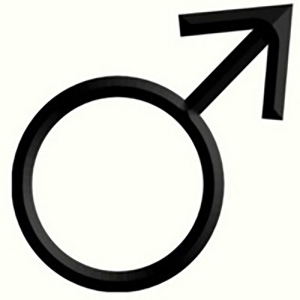Seminal calbindin 2 level in azoospermia and oligoasthenoteratozoospermia and its correlation with seminal and hormonal parameters

Accepted: October 9, 2023
All claims expressed in this article are solely those of the authors and do not necessarily represent those of their affiliated organizations, or those of the publisher, the editors and the reviewers. Any product that may be evaluated in this article or claim that may be made by its manufacturer is not guaranteed or endorsed by the publisher.
Objectives: We aimed to assess seminal calbindin 2 (CALB 2) expression in men with different semen parameters as well as its correlation with reproductive hormones in azoospermic patients and different semen parameters in oligoasthenoteratozoospermic patients. CALB 2 is also known as calretinin and 29 kDa calbindin. Materials and methods: This prospective study was performed on 96 cases from the andrology outpatient clinic divided into 3 groups as follows: group 1 including 32 non obstructive azoospermic (NOA) patients, group 2 including 32 patients with oligoasthenoteratozoospermia (OAT), and Group 3 including normozoospermic individuals as controls. Semen analysis and estimation of seminal CALB 2 concentrations by enzyme linked immunosorbent assay (ELISA) technique were performed for all participants. Reproductive hormones were measured in nonobstructive NOA patients. Results: The mean seminal CALB 2 level was higher in OAT patients compared to NOA patients and controls (7.8 ± 1.30 ng/ml, 7.3 ± 0.80 and 7.4 ± 1.0, respectively). Furthermore, the study had shown strong positive correlations between CALB 2 and sperm normal forms in controls and OAT patients. In contrast, there was no significant correlation between seminal CALB 2 and any of the reproductive hormones measured in NOA patients. Conclusions: Seminal CALB 2 may play a role in increasing the abnormal forms in OAT patients.
Milachich T, Dyulgerova-Nikolova D. The Sperm: Parameters and Evaluation. In Innovations In Assisted Reproduction Technology. IntechOpen; 2020. DOI: https://doi.org/10.5772/intechopen.90677
Boitrelle F, Shah R, Saleh R, et al. The Sixth Edition of the WHO Manual for Human Semen Analysis: A Critical Review and SWOT Analysis. Life. 2021; 11:1368. DOI: https://doi.org/10.3390/life11121368
Asero P, Calogero AE, Condorelli RA, et al. Relevance of genetic investigation in male infertility. J Endocrinol Invest. 2014; 37:415-427. DOI: https://doi.org/10.1007/s40618-014-0053-1
Perrin A, Morel F, Moy L, et al. Study of aneuploidy in largeheaded, multiple-tailed spermatozoa: case report and review of the literature. Fertil Steril. 2008; 90:1201-e13. DOI: https://doi.org/10.1016/j.fertnstert.2007.09.013
Schwaller B. Calretinin: from a “simple” Ca2+ bufer to a multifunctional protein implicated in many biological processes. Front Neuroanat. 2014; 8:3. DOI: https://doi.org/10.3389/fnana.2014.00003
Stevenson L, Allen WL, Proutski I, et al. Calbindin 2 (CALB2) regulates 5-fuorouracil sensitivity in colorectal cancer by modulating the intrinsic apoptotic pathway. PLoS One. 2011; 6:e20276. DOI: https://doi.org/10.1371/journal.pone.0020276
Xu W, Zhu Q, Liu S, et al. Calretinin participates in regulating steroidogenesis by PLC-Ca2+-PKC pathway in Leydig cells. Sci Rep. 2018; 8:1-10. DOI: https://doi.org/10.1038/s41598-018-25427-3
Liu S. Expression of calretinin in the testes of rats at diferent development stages. J Reprod Med. 2014; 21:70-76.
Xu W, Zhu Q, Zhang B, et al. Protective effect of calretinin on testicular Leydig cells via the inhibition of apoptosis. Aging. 2017; 9:1269. DOI: https://doi.org/10.18632/aging.101226
Augusto D, Leteurtre E, De La Taille A, et al. Calretinin: a valuable marker of normal and neoplastic Leydig cells of the testis. Appl Immunohistochem Mol Morphol. 2002; 10:159-162. DOI: https://doi.org/10.1097/00129039-200206000-00011
Nasirpour H, Key YA, Kazemipur N, et al. Association of rubella, cytomegalovirus, and toxoplasma infections with recurrent miscarriages in Bonab-Iran: A case-control study. Gene Cell Tissue. 2017; 4:e60891. DOI: https://doi.org/10.5812/gct.60891
World Medical Association. World Medical Association Declaration of Helsinki: ethical principles for medical research involving human subjects. JAMA. 2013; 310:2191-4. DOI: https://doi.org/10.1001/jama.2013.281053
Altobelli GG, Pentimalli F, D'Armiento M, et al. Calretinin immunoreactivity in the human testis throughout fetal life. J Cell Physiol. 2017; 232:1872-1878. DOI: https://doi.org/10.1002/jcp.25727
World Health Organization (WHO). WHO laboratory manual for the examination and processing of human semen. 5th ed. Geneva: WHO: 2010; p.271. DOI: https://doi.org/10.1038/aja.2008.57
Alahmar AT, Sengupta P, Dutta S, Calogero AE. Coenzyme Q10, oxidative stress markers, and sperm DNA damage in men with idiopathic oligoasthenoteratospermia. Clin Exp Reprod Med. 2021; 48:150. DOI: https://doi.org/10.5653/cerm.2020.04084
Bar-Shira Maymon B, Yavetz H, Yogev L, et al. Detection of calretinin expression in abnormal immature Sertoli cells in non-obstructive azoospermia. Acta Histochem. 2005; 107:105-12. DOI: https://doi.org/10.1016/j.acthis.2005.02.002
GamalEl Din SF, Zeidan A, Salam MAA, et al. Seminal Calbindin 2 in Infertile Men With Varicocele: A Prospective Comparative Study. Reprod Sci. 2023; 30:3077-3083. DOI: https://doi.org/10.1007/s43032-023-01237-5
Ascoli M. Immortalized Leydig Cell Lines as Models for Studying Leydig Cell Physiology. In A. H. Payne & M. P. Hardy (eds) Contemporary Endocrinology: The Leydig Cell in Health and Disease. Humana Press (USA). 2007; pp. 373-381. DOI: https://doi.org/10.1007/978-1-59745-453-7_26
Baimbridge KG, Celio MR, Rogers JH. Calcium-binding proteins in the nervous system. Trends in neurosciences. 1992; 15:303-308. DOI: https://doi.org/10.1016/0166-2236(92)90081-I
Copyright (c) 2023 the Author(s)

This work is licensed under a Creative Commons Attribution-NonCommercial 4.0 International License.
PAGEPress has chosen to apply the Creative Commons Attribution NonCommercial 4.0 International License (CC BY-NC 4.0) to all manuscripts to be published.


 https://doi.org/10.4081/aiua.2023.11906
https://doi.org/10.4081/aiua.2023.11906



